Market Growth Projections
The Global Haptic Interface Market Industry is projected to experience substantial growth over the coming years. The market is expected to reach a valuation of 4.83 USD Billion in 2024, with projections indicating a remarkable increase to 102.4 USD Billion by 2035. This growth trajectory suggests a compound annual growth rate (CAGR) of 32.0% from 2025 to 2035. Such figures reflect the increasing integration of haptic technology across various sectors, including gaming, healthcare, and automotive, highlighting the industry's potential and the transformative impact of haptic interfaces on user experiences.
Advancements in Wearable Technology
The Global Haptic Interface Market Industry is propelled by advancements in wearable technology, which integrate haptic feedback to enhance user interaction. Devices such as smartwatches and fitness trackers utilize haptic interfaces to provide notifications and alerts, thereby improving user experience. The proliferation of these devices indicates a growing acceptance of haptic technology in everyday life. As the market evolves, manufacturers are likely to invest in more sophisticated haptic solutions, further driving the industry's growth. This trend aligns with the overall market trajectory, as it is projected to expand from 4.83 USD Billion in 2024 to 102.4 USD Billion by 2035, with a CAGR of 32.0% during the period from 2025 to 2035.
Integration in Healthcare Applications
The Global Haptic Interface Market Industry finds substantial opportunities in healthcare applications, where haptic technology enhances surgical training and telemedicine. Surgeons can utilize haptic feedback in simulators to practice procedures, thereby improving their skills before performing on actual patients. This integration not only enhances training efficacy but also promotes patient safety. As healthcare institutions increasingly adopt these technologies, the market is poised for growth. The industry's value is expected to rise from 4.83 USD Billion in 2024 to 102.4 USD Billion by 2035, suggesting a promising CAGR of 32.0% from 2025 to 2035.
Growing Adoption in Automotive Industry
The Global Haptic Interface Market Industry is witnessing growing adoption in the automotive sector, where haptic feedback enhances driver interaction with infotainment systems and navigation tools. By providing tactile feedback, haptic interfaces can improve user experience and reduce distractions, thereby promoting safer driving. As automotive manufacturers increasingly integrate these technologies into their vehicles, the market is likely to expand. This trend aligns with the overall growth trajectory of the industry, which is anticipated to increase from 4.83 USD Billion in 2024 to 102.4 USD Billion by 2035, indicating a CAGR of 32.0% from 2025 to 2035.
Rising Demand for Immersive Experiences
The Global Haptic Interface Market Industry experiences a surge in demand for immersive experiences across various sectors, including gaming, virtual reality, and training simulations. As consumers increasingly seek realistic interactions, haptic technology plays a crucial role in enhancing user engagement. For instance, the gaming industry is projected to leverage haptic feedback to create more lifelike environments, thereby attracting a broader audience. This trend is expected to contribute significantly to the market's growth, with the industry valued at 4.83 USD Billion in 2024 and anticipated to reach 102.4 USD Billion by 2035, reflecting a robust CAGR of 32.0% from 2025 to 2035.
Increased Investment in Research and Development
The Global Haptic Interface Market Industry benefits from increased investment in research and development, which fosters innovation and the creation of advanced haptic solutions. Companies are focusing on developing more precise and responsive haptic feedback systems, which can be applied across various sectors, including automotive, gaming, and consumer electronics. This emphasis on R&D is likely to lead to breakthroughs that enhance user experience and broaden the application scope of haptic technology. As a result, the market is projected to grow significantly, with an expected valuation of 4.83 USD Billion in 2024 and a remarkable increase to 102.4 USD Billion by 2035.
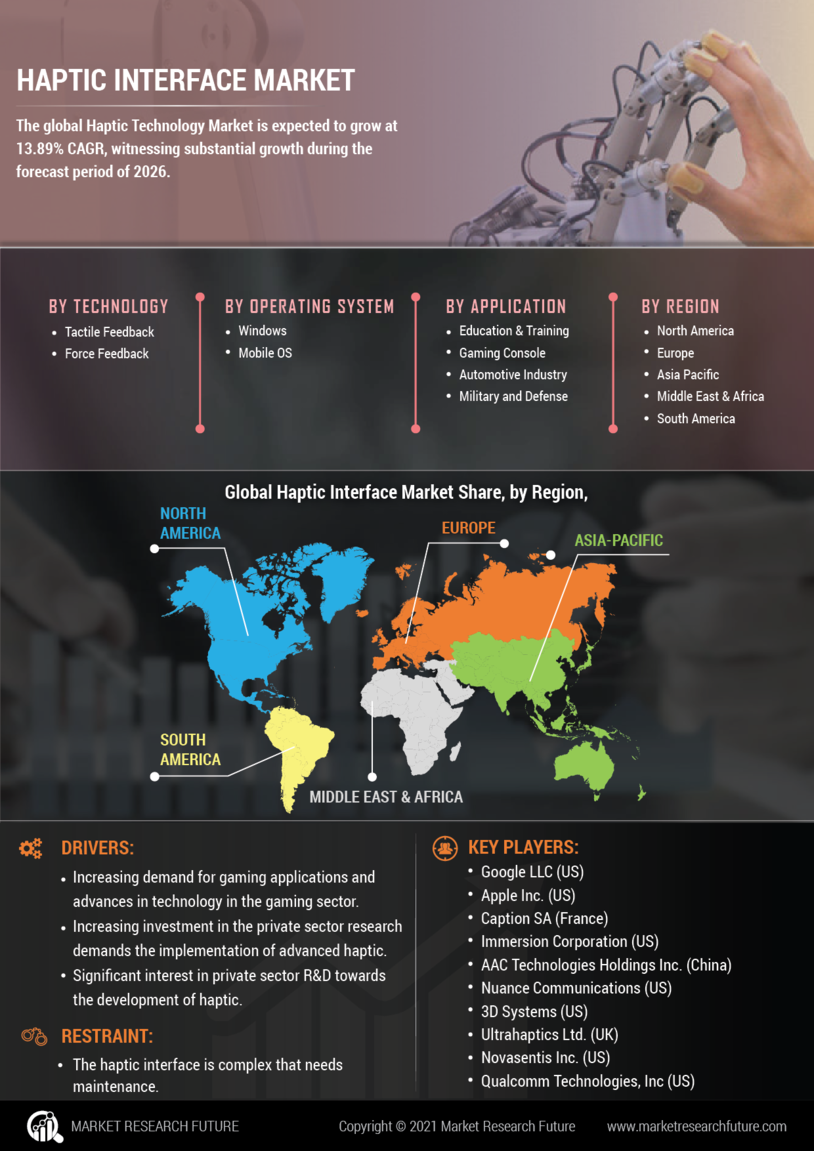
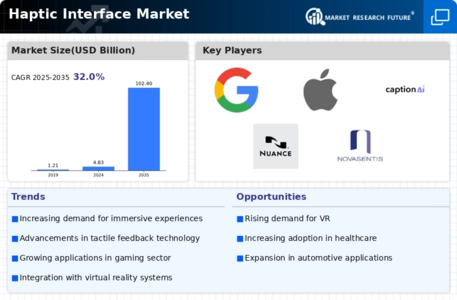
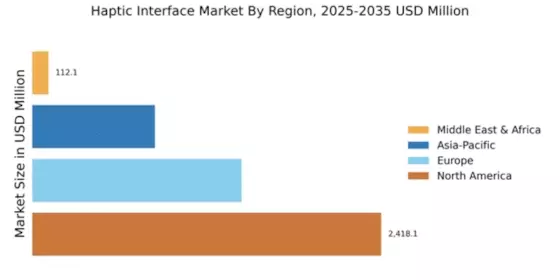

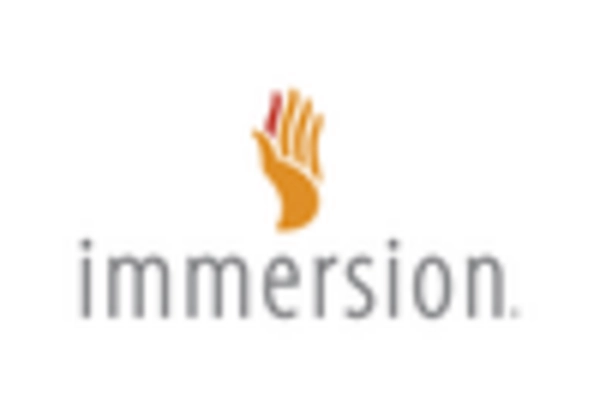

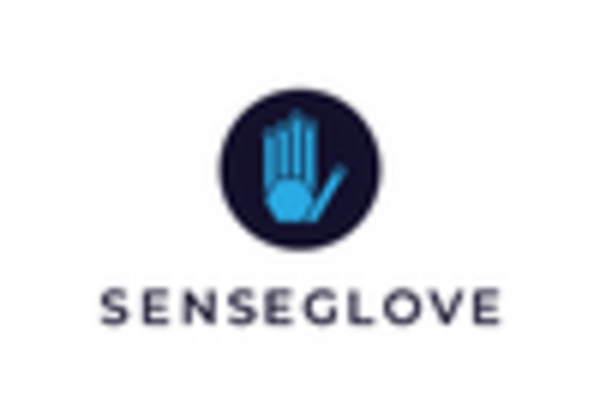










Leave a Comment